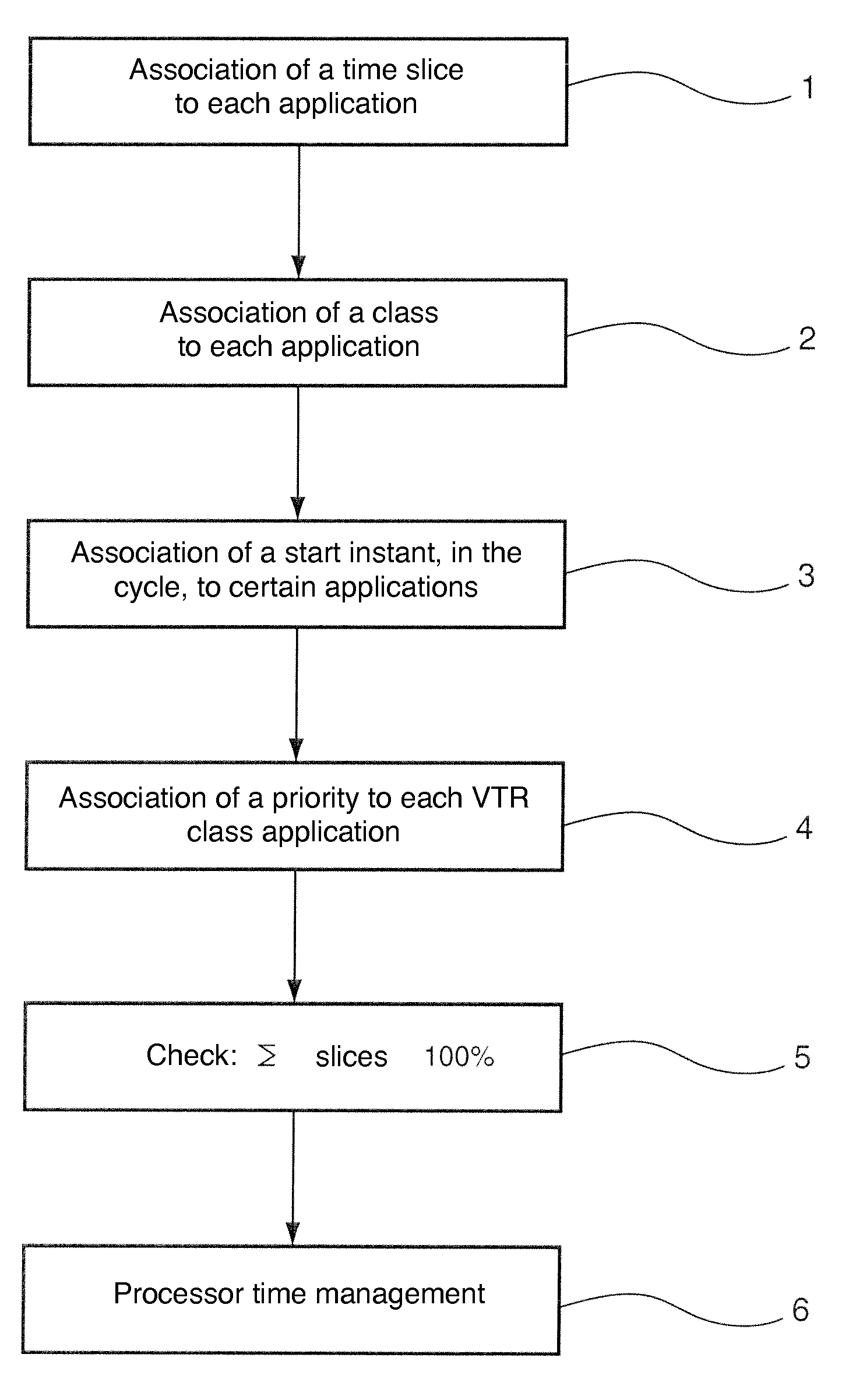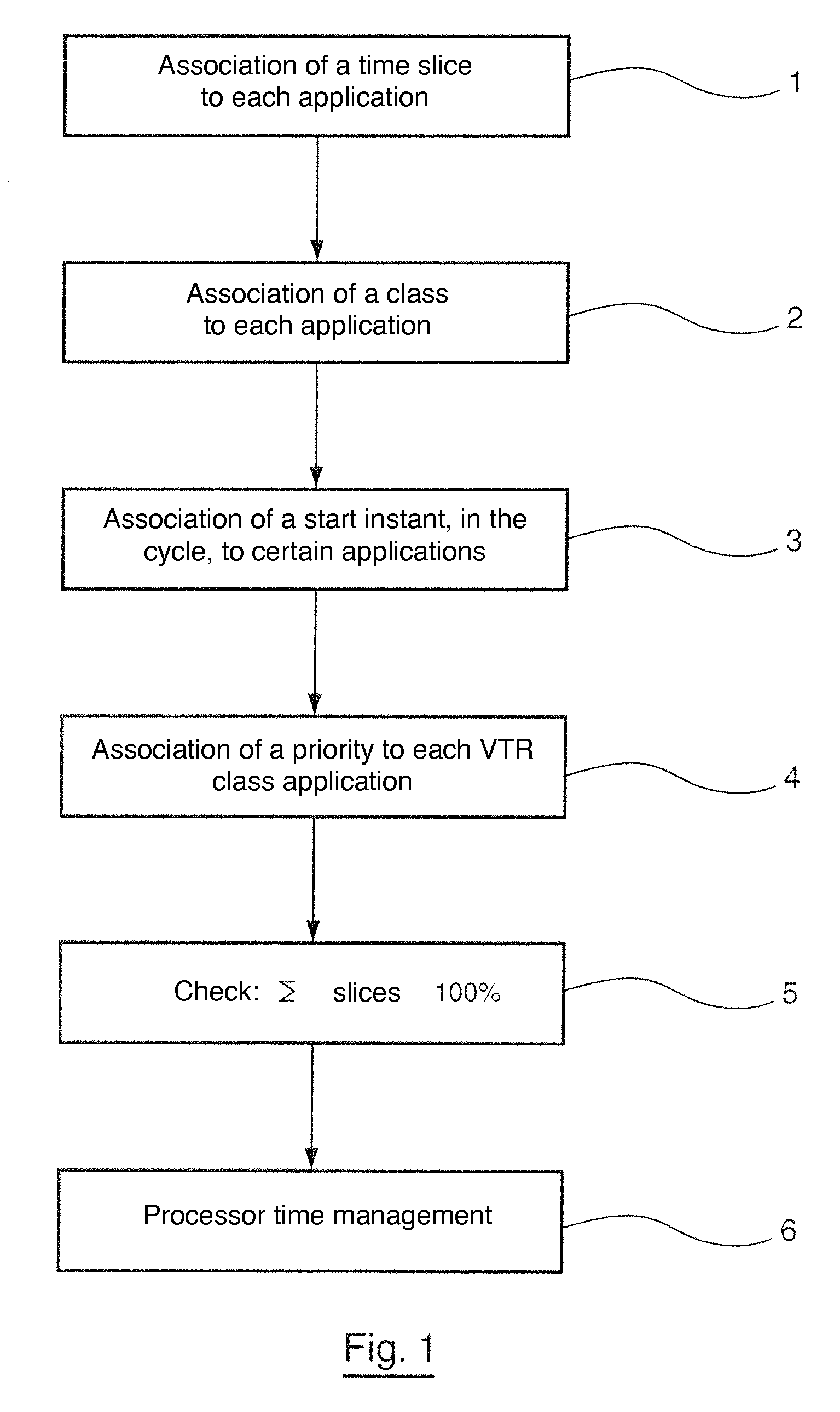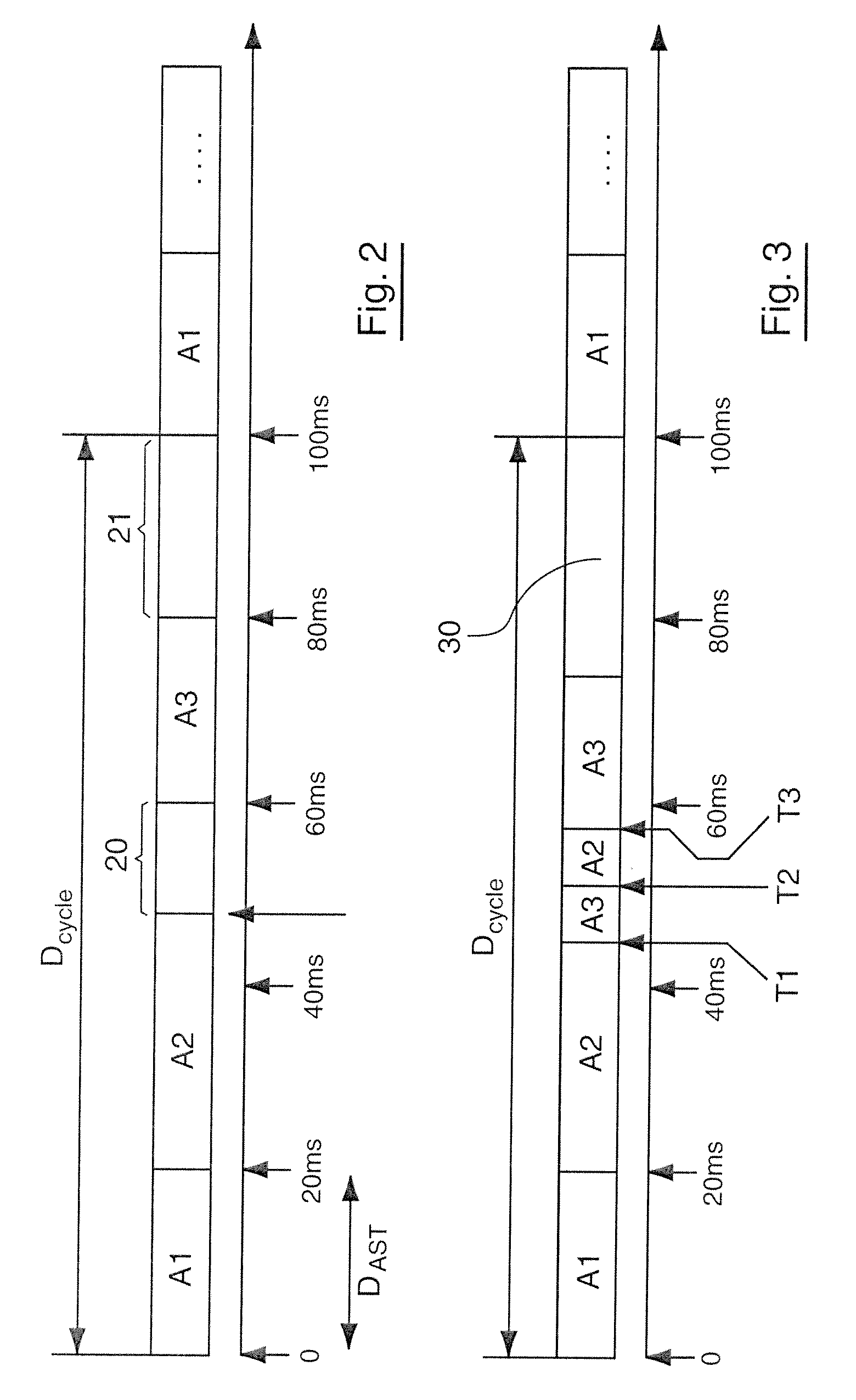Method and device for managing the use of a processor by several applications, corresponding computer program and storage means
a technology for managing the use of processors and processors, applied in program control, program initiation/switching, instruments, etc., can solve the problems of neither of the two task scheduling techniques, affecting the response time of a task, and not allowing moments, so as to achieve easy, fast and optimal integration
- Summary
- Abstract
- Description
- Claims
- Application Information
AI Technical Summary
Benefits of technology
Problems solved by technology
Method used
Image
Examples
Embodiment Construction
[0074]Now in relation to FIG. 1, a specific embodiment of the method according to the invention will be presented for managing, by an operating system, a time of use of a single processor (called processor time below) by at least two applications.
[0075]In a step 1, each application is associated to a processor time slice (or CPU time slice). To achieve this, a periodic timer is used for example which divides the processor time into cycles, wherein each cycle comprises a number N of time intervals (called AST below, Application Scheduling Tick). The processor time slice associated to each application comprises a number Ki of time intervals in each cycle, where 1i<N, and is an index relative to the application. Each time slice is thus composed of the recurrence of a certain number of time intervals within a cyclic structure comprising a determined number of time intervals. For example, if a time interval has a duration of 20 ms and if a cycle comprises 5 time intervals, an application...
PUM
 Login to View More
Login to View More Abstract
Description
Claims
Application Information
 Login to View More
Login to View More - R&D
- Intellectual Property
- Life Sciences
- Materials
- Tech Scout
- Unparalleled Data Quality
- Higher Quality Content
- 60% Fewer Hallucinations
Browse by: Latest US Patents, China's latest patents, Technical Efficacy Thesaurus, Application Domain, Technology Topic, Popular Technical Reports.
© 2025 PatSnap. All rights reserved.Legal|Privacy policy|Modern Slavery Act Transparency Statement|Sitemap|About US| Contact US: help@patsnap.com



